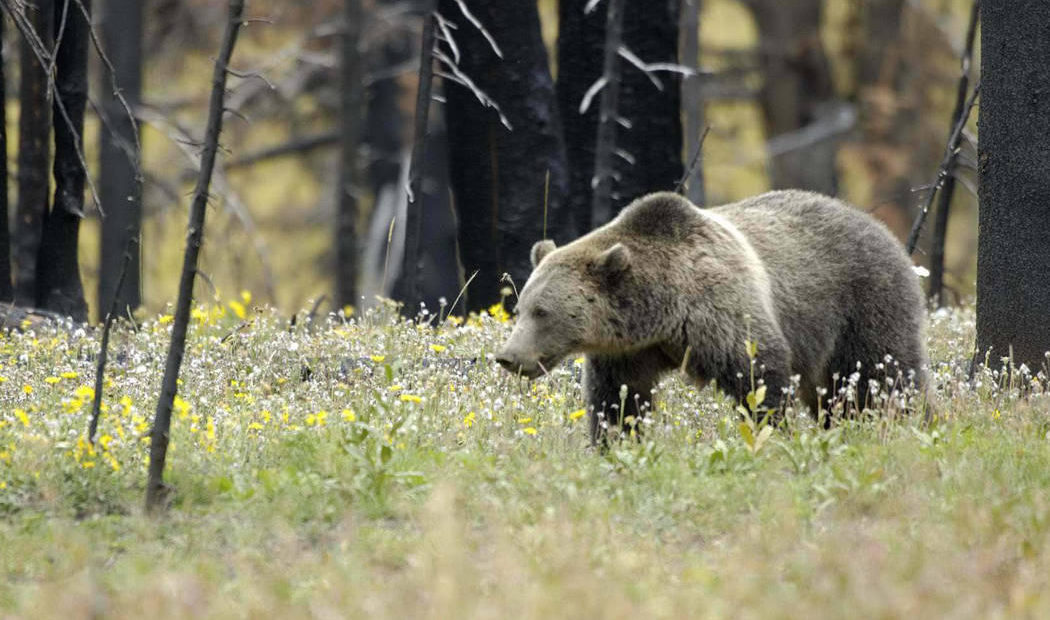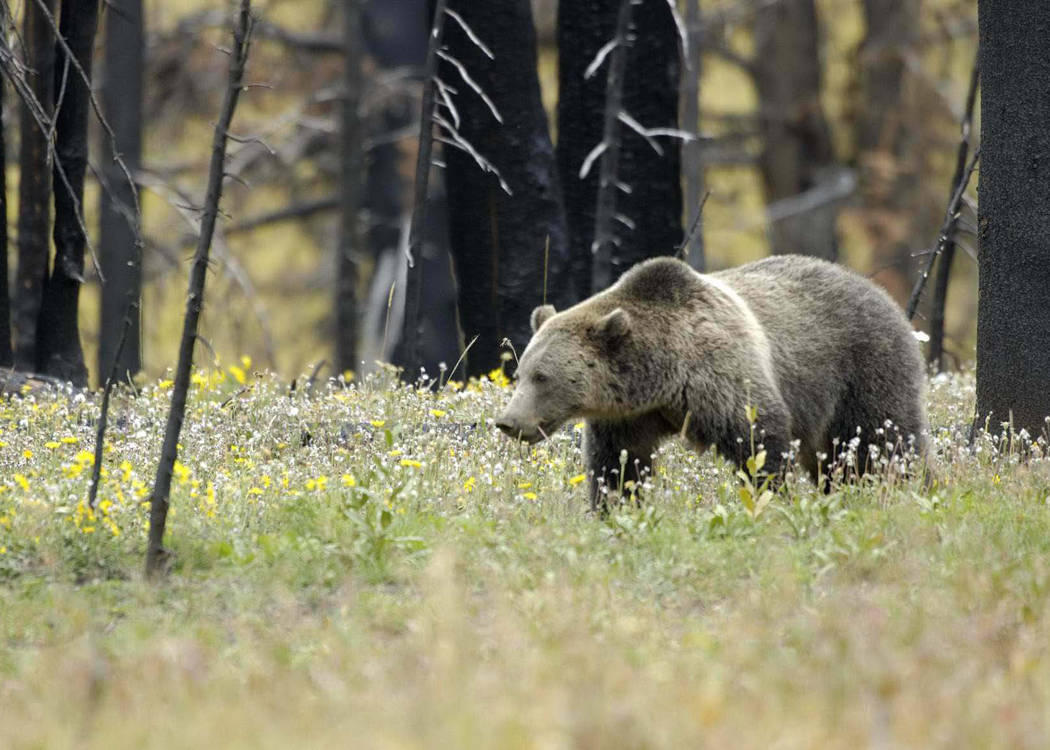
Officials clash over North Cascade grizzly bear reintroduction
Listen
(Runtime 1:22)
Read
In a recent heated committee hearing on Capitol Hill, U.S. Rep. Dan Newhouse, R-Washington, argued against bringing grizzly bears to the North Cascades.
Last month, the federal government decided to reintroduce grizzly bears to the area. Plans would bring up to seven bears each year to the North Cascades, until the initial group of bears reaches 25. That would be the start of repopulating the wild area with bears that biologists say would help restore the ecosystem.
The grizzly bear population eventually could reach 200 bears, but that goal could take a century to reach.
During a House Natural Resources Committee hearing, Newhouse hammered out complaints about part of the plan – known as the 10(j) rule – that would make it easier for managers to take care of problem bears. He aimed his comments at U.S. Fish and Wildlife Service Director Martha Williams.
“Your agency is bending to the extreme environmentalists, who continually abuse the ESA (Endangered Species Act) against the will of private landowners,” he said.
Newhouse said federal officials told him the only reason to implement the 10(j) rule was because Canadian First Nations had plans to move bears near the U.S. border. Later, he said, his staff found that wasn’t true.
After Newhouse finished speaking, Williams asked to respond, but the hearing ended abruptly.
With the mics still on, National Oceanic and Atmospheric Administration Administrator Richard Spinrad leaned over to Williams.
“How you doing?” Spinrad asked.
“Pack of lies,” Williams said, standing up.
Williams was not available for an interview before publication.
Andrew Lavelle, a U.S. Fish and Wildlife spokesperson, said the 10(j) rule provides a larger toolbox to manage the grizzlies in the North Cascades.
“Some tools can be deployed earlier to prevent and address conflict than would be available under existing Endangered Species Act regulations. As the rule notes, the designation is an important tool for building social tolerance and support for grizzly bear conservation,” Lavelle wrote in an email.
For grizzlies in the North Cascades, that means managers could have more options for deterrence, preemptive relocation or killing of bears that cause problems.
Washington is sectioned into three management areas. In most of the state, people would be allowed to injure or kill a grizzly bear caught in the act of attacking livestock or harming a working dog on private land, according to the rule.
The areas with slightly different management guides include federal lands in the North Cascades Ecosystem and several national forests in the region, mostly in central Washington.
However, Newhouse has taken aim at the 10(j) rule, hoping to overturn it. He entered what’s known as a “resolution of disapproval” under the Congressional Review Act.
“I will continue to fight for the farmers, the ranchers, the rural communities near the North Cascades,” he said.
The 10(j) amendment was added to the Endangered Species Act in 1982 in an effort to relieve landowners, tribes and public land users who worried reintroduced species could cause them or their property harm. The Fish and Wildlife Service hoped it would allow for more collaboration with private landowners.
Any species reintroduced into an area outside its current range but within its likely historic range can receive the 10(j) designation.
According to the Fish and Wildlife Service, this isn’t the first instance of a 10(j) rule in the greater Northwest.
The rule has been established for bull trout in Oregon’s Clackamas River and for Oregon silverspot butterflies in the Northwestern part of the state. The rule also has been used to protect condors in northern California. Recently, the rule has been established with wolves in Colorado.
For Oregon’s bull trout, the U.S. Fish and Wildlife Service and other state and federal agencies hoped to re-establish a self-sustaining population of fish in the river by 2030. The agencies moved bull trout from the Metolius River in central Oregon.
The moved fish weren’t critical to bull trout’s survival in the wild, so the Clackamas River fish were designated as a nonessential experimental population. The designation also meant catch and release sport fishing could continue and federal hydroelectric projects wouldn’t have to change. Unintentional, nonnegligent killing of bull trout isn’t punished.
According to the Fish and Wildlife Service, bull trout continue to establish themselves in the Clackamas River watershed without issues.
















